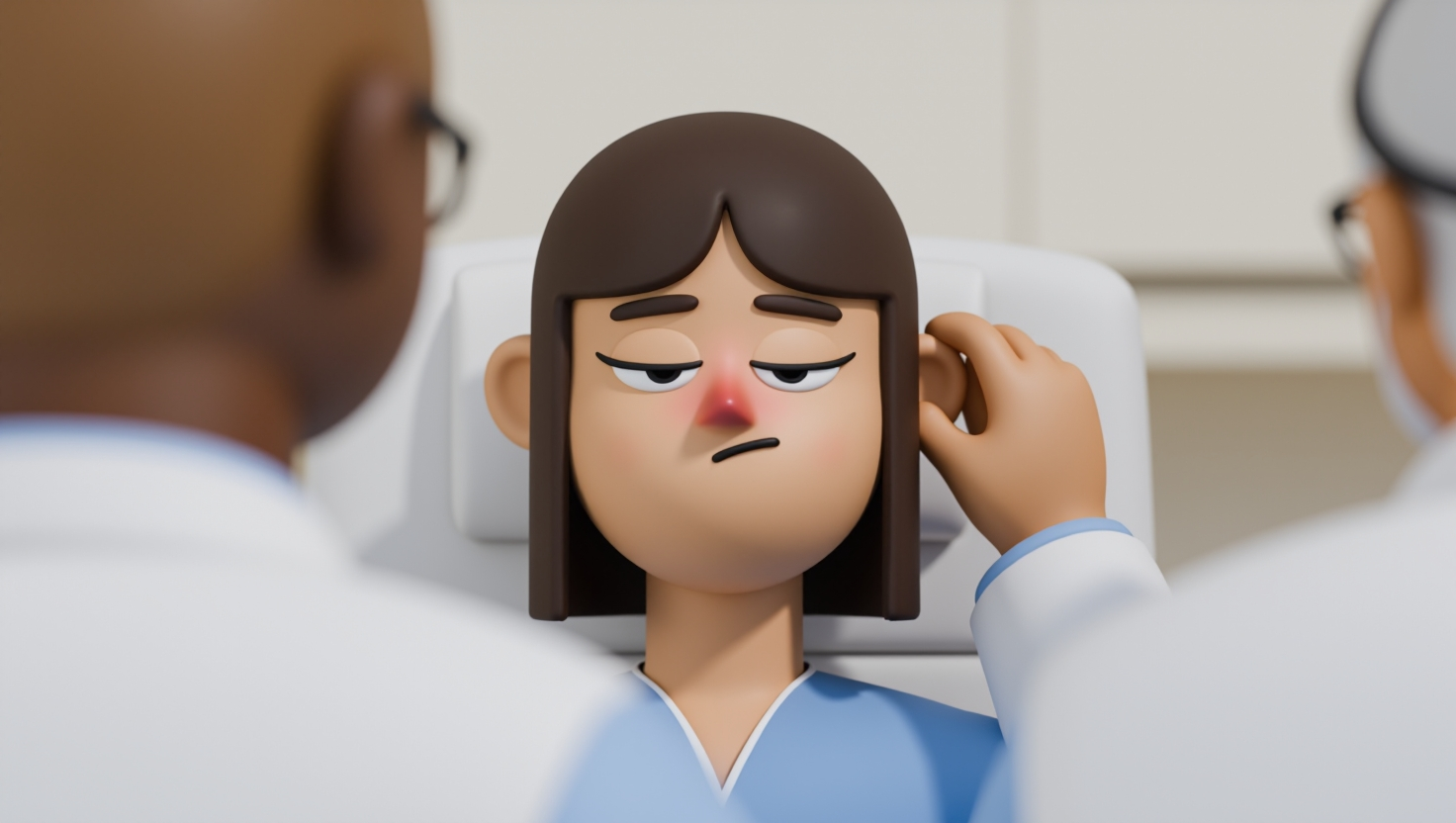
When your livelihood depends on sound, small throat or ear problems can snowball into missed shows, lost bookings, and strain that lingers long after the spotlight fades.
Why does this topic matter today?
Imagine a rehearsal where a note will not land. Your pitch drifts and your throat feels tight. The room seems louder than last week. You wonder if rest will be enough. That is the moment ENT care earns attention.
What does ENT cover for voices?
ENT care watches ears, nose, throat, and nearby structures. The focus includes breathing, hearing, and vocal cord function. These systems shape tone, stamina, and comfort. Good airflow supports reliable pitch and power. Clear hearing guides placement and timing on stage.
How do tiny problems grow quickly?
Small swelling can change cord vibration patterns. Mucus can dull resonance and clarity. Ear pressure can distort pitch perception subtly. Dry rooms can roughen delicate mucosa quickly. Minor issues multiply during busy performance weeks.
How do vocal cords truly work?
Two folds meet and vibrate as air passes. The vibration depends on edge smoothness and tension. Hydration helps the tissue stay supple. Irritation thickens the edges and blunts tone. Good technique reduces rubbing and strain over time.
Why should hearing protection be routine?
Loud rehearsal spaces challenge ears daily. Cumulative exposure affects clarity and focus. Custom musicians’ plugs lower volume without muffling. They keep pitch cues and speech crisp. This habit protects careers as shows scale up.
What early warning signs deserve attention?
Morning hoarseness that lingers matters. Old notes feel harder at normal effort. Range narrows during warmups unexpectedly. High volumes require more push than usual. Tinnitus gets louder after gigs and rest.
How do allergies change the game?
Allergy flare ups swell nasal passages quickly. Mouth breathing dries the vocal tract faster. Postnasal drip irritates cords and cough reflexes. Antihistamines can help yet dry tissues. Rinses and humidifiers balance those trade offs carefully.
Is reflux a silent player here?
Stomach acid can reach the larynx overnight. The tissue reacts with swelling and tightness. Morning voice often feels woolly or dull. Late meals make symptoms louder next day. Elevating the head can ease night reflux.
What daily habits give quick wins?
Hydration keeps mucosa resilient and smooth. Gentle warmups prepare vibration without friction. Short cool downs reduce leftover tightness. Steam helps during dry seasons or travel. Simple routines prevent many urgent clinic visits.
How does room air change performance?
Low humidity dries the airway within minutes. Sudden temperature shifts shock vocal tissues. Dust triggers coughing and throat clearing cycles. Consistent indoor targets reduce swings and strain. Portable humidifiers help backstage and hotel rooms.
Where do microphones enter the picture?
Good mic technique lowers vocal effort needed. In ear monitors reduce stage volume and fatigue. Feedback control protects ears during rehearsals. Engineers can set safe reference levels. Balanced sound lets talent conserve energy wisely.
What should travel plans include?
Flights dehydrate and irritate the airway. Time zone shifts reduce recovery windows. Pack saline sprays and a small steamer. Plan quiet hours on arrival day. Book rooms away from heavy nightlife noise.
How do clinics evaluate a struggling voice?
ENT teams use flexible laryngoscopy for views. Stroboscopy shows vibration patterns clearly. Audiometry checks frequency ranges and thresholds. Tympanometry confirms middle ear pressure behavior. Results steer treatment timing and rest plans.
When is rest better than pushing?
Pain or sharp fatigue means stop now. Hoarseness that lasts beyond two days matters. Loss of upper range suggests swelling. Whispering increases air flow and friction. Gentle silence heals faster than forced singing.
What treatments are commonly considered?
Anti reflux measures support inflamed tissue. Allergy plans calm nasal lining steadily. Short steroid courses are sometimes used. Voice therapy builds safer technique patterns. Each step matches the clinical picture and schedule.
How does voice therapy help practically?
Therapists teach efficient breath support patterns. They coach release of unnecessary tension. Small drills retrain onset and resonance balance. Home plans take minutes yet add up. Technique trims effort and expands safe range.
What do institutions recommend in general?
Cancer aside, major bodies stress hearing conservation. Otolaryngology groups promote safe sound levels. Speech therapy associations emphasize gentle technique. Health ministries publish seasonal allergy guidance. These themes repeat across many countries reliably.
How should managers support performers?
Set rehearsal blocks with recovery time. Protect quiet days after heavy show runs. Provide humidifiers and safe sound checks. Encourage early reporting of symptoms. Small structures prevent bigger schedule shocks later.
What does a good warmup include?
Start with easy airflow exercises. Add lip trills for gentle vibration. Step through range without strain. Finish with brief articulation drills. Keep the total short and focused daily.
What makes a good cooldown routine?
Slide down in gentle patterns slowly. Add soft humming that relaxes tissues. Drink water and avoid late spicy meals. Consider a little steam if air feels dry. Maintain quiet time before long conversations.
How do mental loads affect voices?
Stress tightens the neck and jaw quickly. Breath becomes shallow and uneven. Short pauses reset the vagal rhythm. Simple self talk keeps effort moderate. Calm minds translate into steadier tone.
Where do infections enter the picture?
Crowded venues increase exposure to viruses. Early symptoms can derail show plans. Hand hygiene remains a strong basic step. Masks help during peak transmission seasons. Rest shortens the overall disruption timeline.
What about medication pitfalls to note?
Decongestants can dry cords significantly. Some sprays rebound after prolonged use. Overuse creates tougher congestion cycles later. Always discuss timing with your clinician. Plan around show week needs carefully.
How should you plan clinic visits?
Book periodic ENT checks during busy seasons. Add hearing tests to the routine schedule. Track patterns in a simple notebook. Take recordings that show change clearly. Data helps teams fine tune advice.
How does nutrition support stability?
Balanced meals steady energy and mood. Avoid heavy late dinners near bedtime. Support hydration with soups and fruits. Limit alcohol that dehydrates and irritates. Predictable routines beat last minute fixes.
What about young talents and students?
Teen voices change and tire quickly. Coaching prevents heavy strain patterns early. Parents should encourage realistic schedules. School stages still need safe sound levels. Early habits last into professional life.
Can cross training help professionals?
Light aerobic work supports breath control. Mobility reduces neck and rib tension. Strength work improves posture endurance. Recovery days keep gains without overuse. Fitness supports artistry more than many expect.
What if tinnitus appears after shows?
Note the duration and intensity carefully. Persistent ringing deserves clinic time. Hearing tests map the affected frequencies. Protection becomes non negotiable after that. Early action prevents larger hearing losses.
How should teams handle a sudden crisis?
Cancel and reschedule when voice pain appears. Protect reputation with clear statements. Set recovery targets with your clinician. Avoid risky guest spots during recovery. The long view protects the brand and craft.
According to our editor’s research, what patterns work?
According to our editor’s research, humidity control gives steady benefits. Consistent sleep schedules reduce vocal crashes. In ear monitors improve long tour endurance. Steam before warmups reduces scratchy onsets. These simple choices keep shows on track.
As a result of our editor’s reviews, what helps venues?
As a result of our editor’s reviews, venues matter more than expected. Stages with adjustable acoustics reduce shouting. Backstage spaces with quiet zones help. Clean air handling reduces dust exposure. These features add real protection during runs.
How does local guidance support planning?
City health authorities publish seasonal alerts. Allergy peaks follow regional pollen patterns closely. National bodies advise on workplace sound exposure. Occupational rules often cover crew and artists. Local clinics translate these into daily steps.
What belongs in a personal voice kit?
Carry saline spray and a small steamer. Add musicians’ earplugs and a thermometer. Pack lozenges without numbing agents. Include a water bottle and notebook. Simple kits prevent sloppy last minute choices.
How can you track progress sensibly?
Record warmup comfort on a simple scale. Note show effort levels afterward. Log room humidity and sleep hours. Compare across cities and schedules later. Patterns will guide better future planning.
Why are relationships with clinicians so useful?
Trust speeds up decisions during pressure. Teams can approve quick adjustments quickly. Shared history avoids repeated testing. Personalized plans respect your deadlines. That cooperation keeps careers resilient and steady.
What should students learn early in training?
They should learn anatomy in simple language. They should learn safe warmup progressions. They should learn stage sound basics. They should learn rest as a skill. These basics set habits for long careers.
Where do speech therapists fit in?
They refine breathing, resonance, and articulation. They help remove unhelpful muscle patterns. They coach recovery after acute injuries. They coordinate with ENT for safe timelines. Therapy strengthens technique without losing expression.
How do you prepare for a recording week?
Block quiet mornings before heavy sessions. Keep caffeine steady and not excessive. Confirm mic placement that reduces effort. Schedule short breaks between takes. Plan early night routines across the week.
What if a diagnosis sounds scary?
Many diagnoses sound worse than they are. Swelling and nodules often improve with therapy. Rest and targeted drills change outcomes. Panicking increases muscle tension and strain. Stay curious and follow the agreed plan.
How do teams align during long tours?
Share a short health brief with everyone. Set backup plans for sudden cancellations. Keep humidifiers and spares on hand. Review schedules every few days together. Coordination avoids avoidable last minute crises.
Why do numbers help the conversation?
Humidity targets keep rooms stable. Sound level targets protect hearing. Step counts reflect fitness trends. Sleep hours predict vocal readiness. Simple metrics help decisions feel objective.
What does recovery after illness look like?
Start with quiet days and gentle steam. Add hums before full warmups. Increase effort across several rehearsals. Book a quick check if symptoms linger. Keep expectations realistic during the first shows.
How should you talk to your audience?
Honesty builds trust during tough weeks. Short updates reduce speculation and stress. Gratitude softens necessary changes gracefully. Fans value health protected with care. This approach protects future shows as well.
When should you escalate care urgently?
Seek care for sudden voice loss today. Seek care for painful swallowing or blood. Seek care for high fever with hoarseness. Seek care for spinning dizziness or hearing loss. Fast action saves time and function.
